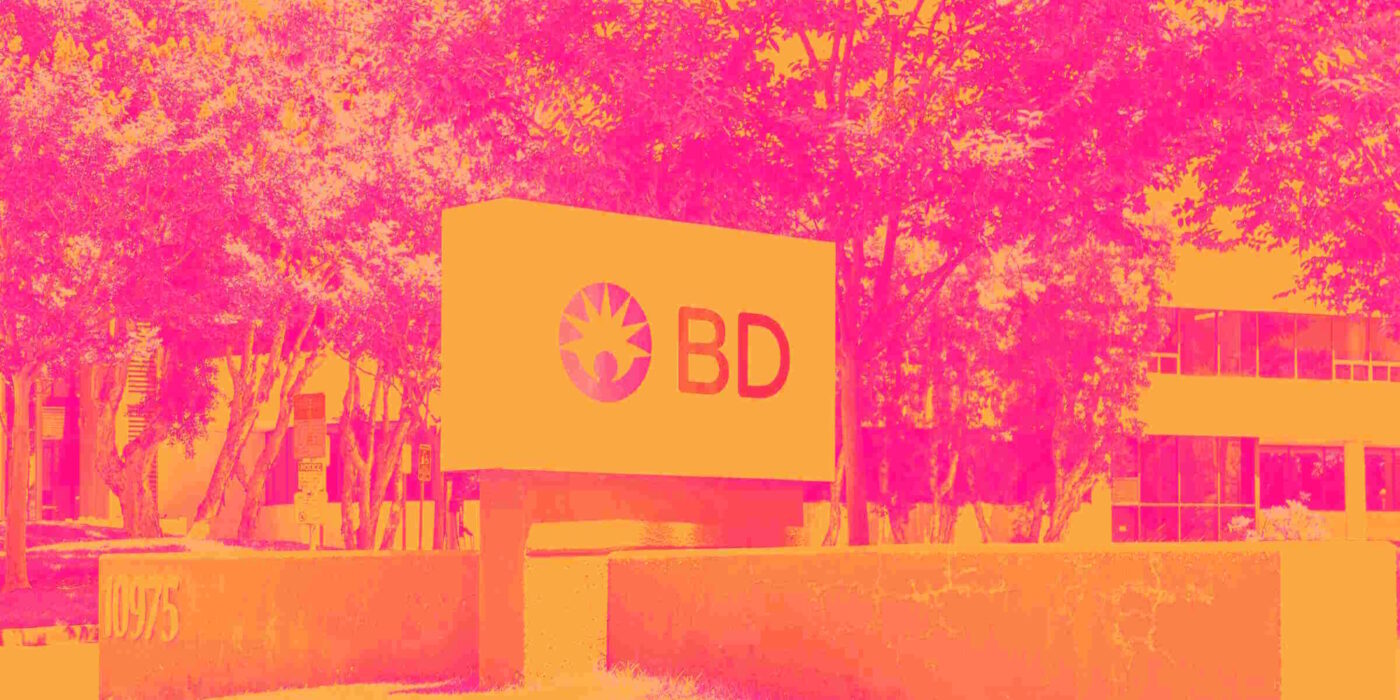
Medical technology company Becton, Dickinson and Company (NYSE:BDX) met Wall Street’s revenue expectations in Q2 CY2025, with sales up 8.9% year on year to $5.51 billion. The company’s outlook for the full year was close to analysts’ estimates with revenue guided to $21.85 billion at the midpoint. Its non-GAAP profit of $3.68 per share was 8.2% above analysts’ consensus estimates.
Is now the time to buy BD? Find out by accessing our full research report, it’s free.
BD (BDX) Q2 CY2025 Highlights:
- Revenue: $5.51 billion vs analyst estimates of $5.48 billion (8.9% year-on-year growth, in line)
- Adjusted EPS: $3.68 vs analyst estimates of $3.40 (8.2% beat)
- Adjusted EBITDA: $1.5 billion vs analyst estimates of $1.58 billion (27.2% margin, 5.2% miss)
- The company reconfirmed its revenue guidance for the full year of $21.85 billion at the midpoint
- Management raised its full-year Adjusted EPS guidance to $14.38 at the midpoint, a 1.2% increase
- Operating Margin: 16%, up from 11.9% in the same quarter last year
- Free Cash Flow Margin: 19%, down from 22.1% in the same quarter last year
- Constant Currency Revenue rose 8.5% year on year (2.9% in the same quarter last year)
- Market Capitalization: $49.41 billion
Company Overview
With a history dating back to 1897 and a presence in virtually every hospital around the globe, Becton Dickinson (NYSE:BDX) develops and manufactures medical supplies, devices, laboratory equipment and diagnostic products used by healthcare institutions and professionals worldwide.
Revenue Growth
Reviewing a company’s long-term sales performance reveals insights into its quality. Even a bad business can shine for one or two quarters, but a top-tier one grows for years. Unfortunately, BD’s 5.5% annualized revenue growth over the last five years was mediocre. This was below our standard for the healthcare sector and is a tough starting point for our analysis.
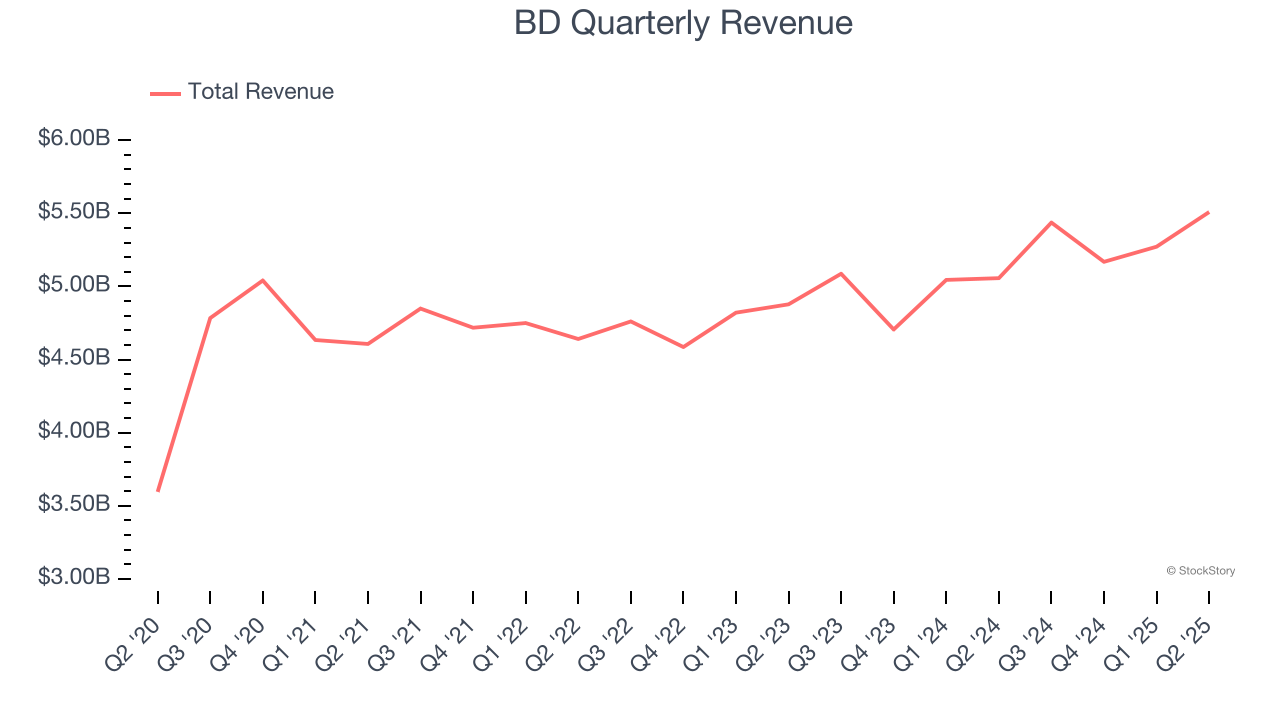
We at StockStory place the most emphasis on long-term growth, but within healthcare, a half-decade historical view may miss recent innovations or disruptive industry trends. BD’s annualized revenue growth of 6% over the last two years aligns with its five-year trend, suggesting its demand was consistently weak. 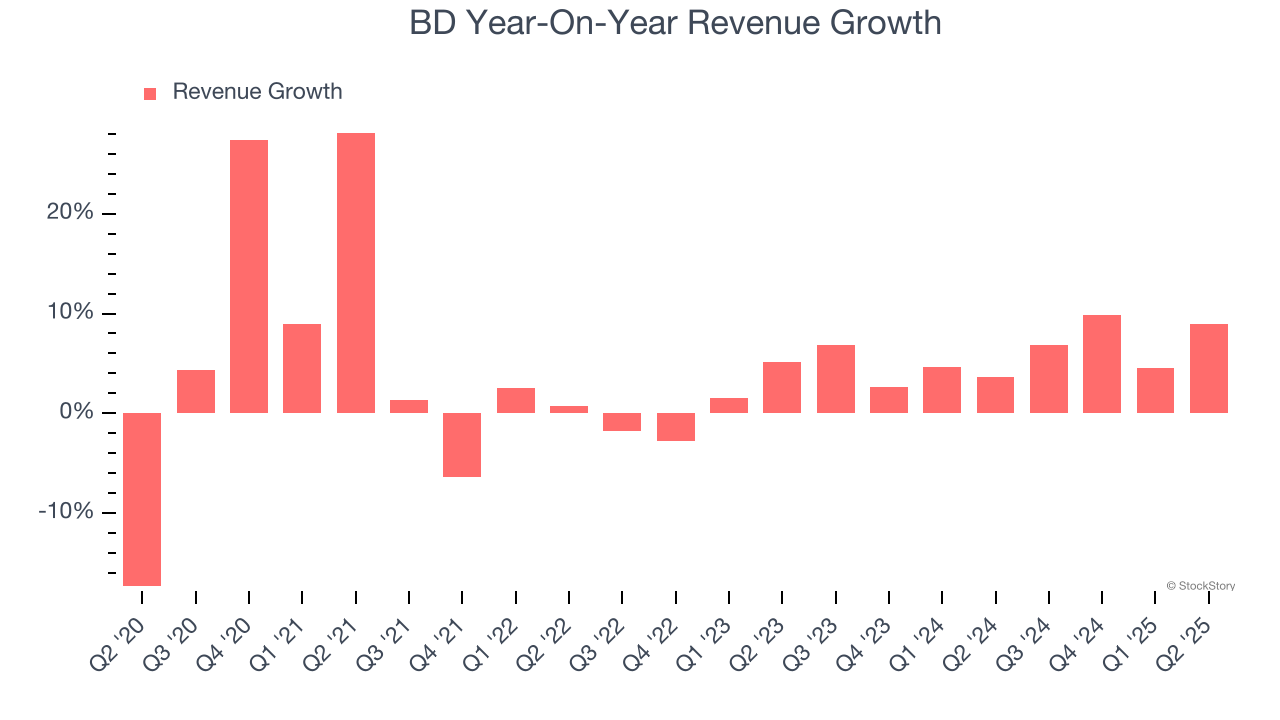
We can better understand the company’s sales dynamics by analyzing its constant currency revenue, which excludes currency movements that are outside their control and not indicative of demand. Over the last two years, its constant currency sales averaged 5.8% year-on-year growth. Because this number aligns with its normal revenue growth, we can see that BD has properly hedged its foreign currency exposure. 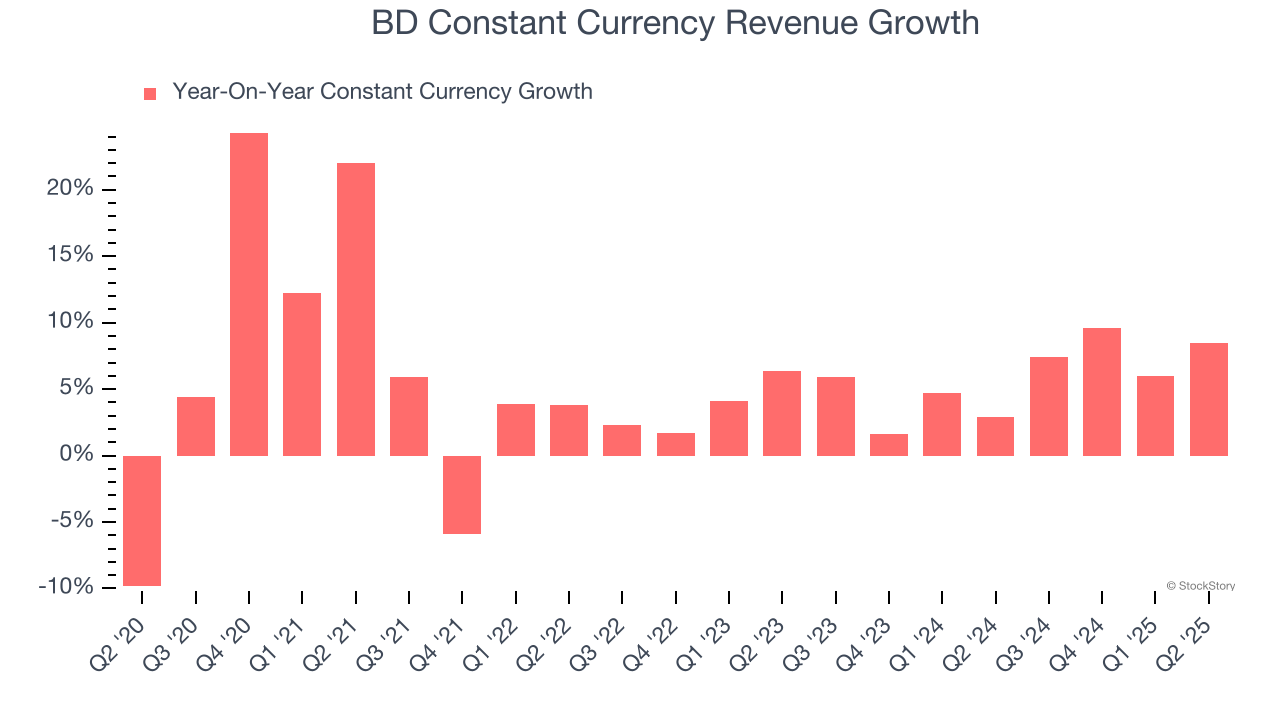
This quarter, BD grew its revenue by 8.9% year on year, and its $5.51 billion of revenue was in line with Wall Street’s estimates.
Looking ahead, sell-side analysts expect revenue to grow 5.7% over the next 12 months, similar to its two-year rate. This projection is above the sector average and suggests its newer products and services will help sustain its recent top-line performance.
Today’s young investors won’t have read the timeless lessons in Gorilla Game: Picking Winners In High Technology because it was written more than 20 years ago when Microsoft and Apple were first establishing their supremacy. But if we apply the same principles, then enterprise software stocks leveraging their own generative AI capabilities may well be the Gorillas of the future. So, in that spirit, we are excited to present our Special Free Report on a profitable, fast-growing enterprise software stock that is already riding the automation wave and looking to catch the generative AI next.
Operating Margin
Operating margin is an important measure of profitability as it shows the portion of revenue left after accounting for all core expenses – everything from the cost of goods sold to advertising and wages. It’s also useful for comparing profitability across companies with different levels of debt and tax rates because it excludes interest and taxes.
BD’s operating margin has been trending up over the last 12 months and averaged 11.7% over the last five years. Its profitability was higher than the broader healthcare sector, showing it did a decent job managing its expenses.
Looking at the trend in its profitability, BD’s operating margin might fluctuated slightly but has generally stayed the same over the last five years. This raises questions about the company’s expense base because its revenue growth should have given it leverage on its fixed costs, resulting in better economies of scale and profitability.
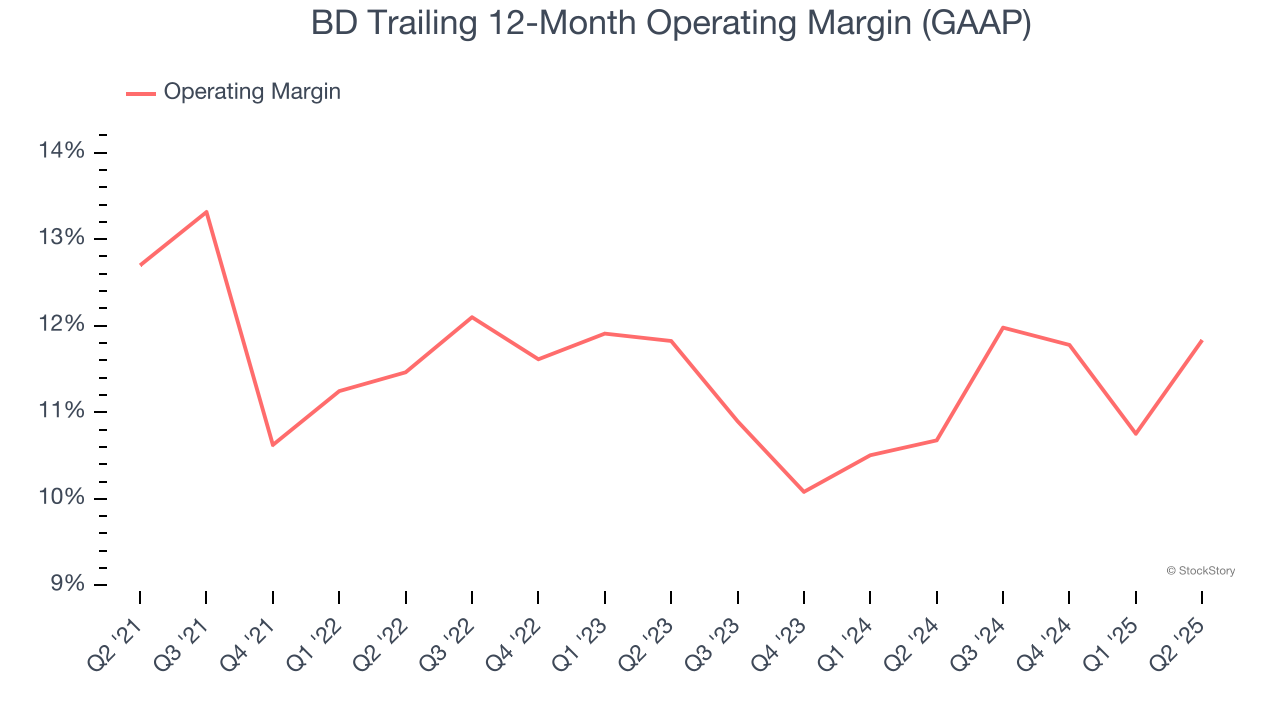
This quarter, BD generated an operating margin profit margin of 16%, up 4.1 percentage points year on year. This increase was a welcome development and shows it was more efficient.
Earnings Per Share
We track the long-term change in earnings per share (EPS) for the same reason as long-term revenue growth. Compared to revenue, however, EPS highlights whether a company’s growth is profitable.
BD’s decent 5.9% annual EPS growth over the last five years aligns with its revenue performance. This tells us its incremental sales were profitable.
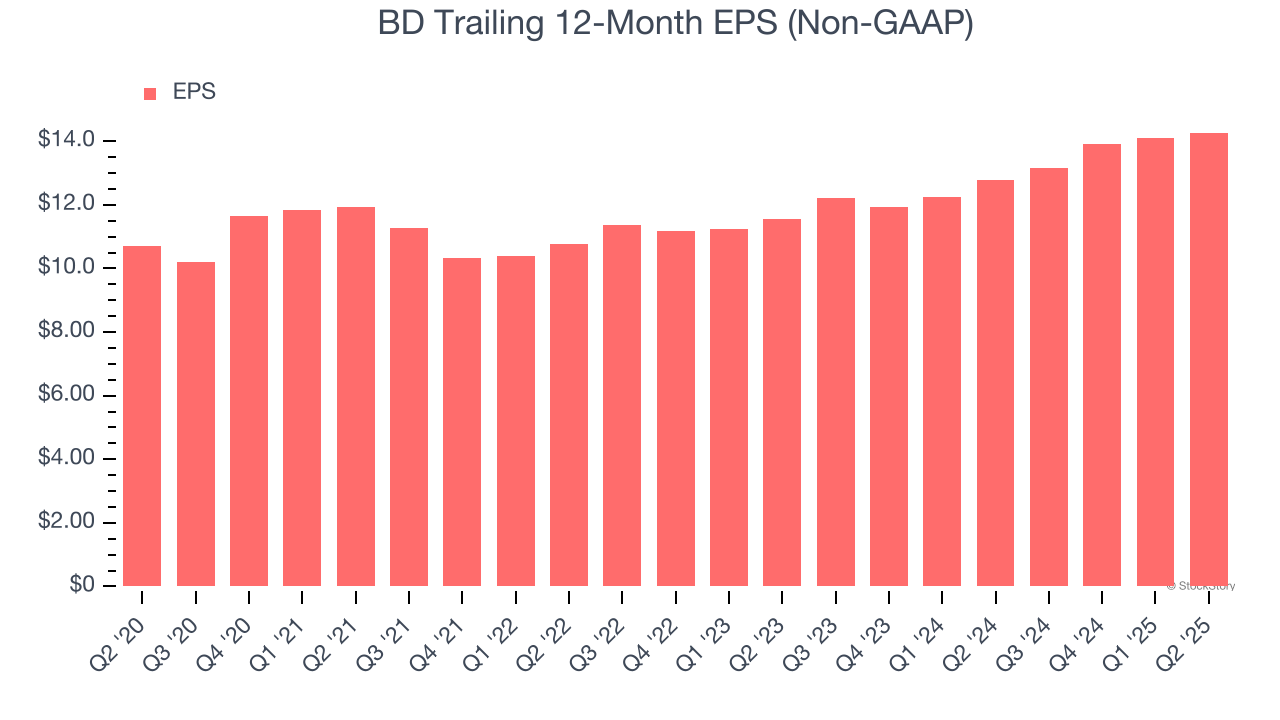
In Q2, BD reported adjusted EPS at $3.68, up from $3.50 in the same quarter last year. This print beat analysts’ estimates by 8.2%. Over the next 12 months, Wall Street expects BD’s full-year EPS of $14.27 to grow 1%.
Key Takeaways from BD’s Q2 Results
It was encouraging to see BD beat analysts’ EPS expectations this quarter. We were also happy its full-year EPS guidance narrowly outperformed Wall Street’s estimates. Overall, this print had some key positives. The stock traded up 7.8% to $185.91 immediately following the results.
So should you invest in BD right now? We think that the latest quarter is only one piece of the longer-term business quality puzzle. Quality, when combined with valuation, can help determine if the stock is a buy. We cover that in our actionable full research report which you can read here, it’s free.
